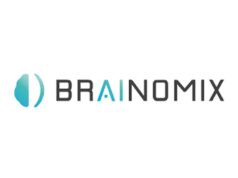 Viz.ai has announced new clinical data showcasing the impact of Viz ICH and Viz ICH Plus in optimising care for patients with intracerebral haemorrhage (ICH). According to the company, this case study highlights how artificial intelligence (AI)-powered detection and quantification can significantly reduce interhospital transfer time, expediting treatment and improving patient outcomes.
Viz.ai has announced new clinical data showcasing the impact of Viz ICH and Viz ICH Plus in optimising care for patients with intracerebral haemorrhage (ICH). According to the company, this case study highlights how artificial intelligence (AI)-powered detection and quantification can significantly reduce interhospital transfer time, expediting treatment and improving patient outcomes.
The study features a 47-year-old patient with a right parieto-occipital haematoma who was rapidly identified by Viz.ai and transferred through the Neuroemergencies Management and Transfer (NEMAT) programme. The use of Viz ICH and Viz ICH Plus cut the interhospital transfer time down to just 101 minutes in this case, compared to an average of 200 minutes, allowing the patient to undergo successful surgical evacuation and achieve significant neurological recovery over the following year, Viz.ai claims.
“Viz ICH has transformed how we identify and triage patients with ICH,” said Christopher Kellner (Mount Sinai Health System, New York, USA). “By accelerating diagnosis and enabling real-time alerts across teams and hospitals, this technology streamlines the entire transfer process, ensuring patients get the care they need without unnecessary delays.”
A Viz.ai press release notes that accurate volume measurements of brain bleeds are “crucial” for assessing the severity of cases, monitoring progression, and guiding treatment decisions—however, these measurements have traditionally been manual and time consuming. Radiologists, neurologists and neurosurgeons can incorporate Viz ICH and Viz ICH Plus “seamlessly” into their workflows to automate this process and support faster, more efficient care decisions, the release adds.
According to Viz.ai—in addition to reducing transfer time—AI-powered detection and quantification has demonstrated improved efficiency in clinical workflows, with faster haematoma volume estimation and more accurate assessments compared to manual methods. The present study also highlights the scalability of the solution across large, complex hospital systems where specialised ICH care may only be available at select sites.
In a separate press release, Viz.ai also recently announced that it had received US Food and Drug Administration (FDA) 510(k) clearance for Viz Subdural Plus—the “first and only” comprehensive solution for quantifying the size of collections like haemorrhages in the subdural space on non-contrast computed tomography (NCCT) images. According to the company, its Viz Subdural Plus module is designed to support clinical decision-making by automatically labelling subdural collections, and reporting measurements including volume, thickness and midline shift.
“Viz Subdural Plus introduces a new level of precision in diagnosing and monitoring subdural haemorrhage,” commented David Altschul (Montefiore Health System, New York, USA). “Having automated volume and max thickness measurements at our fingertips allows us to make faster, more informed treatment decisions—especially critical in managing elderly patients or those on anticoagulants. As we increasingly turn to minimally invasive options like MMA [middle meningeal artery] embolisation to reduce recurrence, tools like Viz Subdural Plus are essential to guiding timely and effective treatment.”









